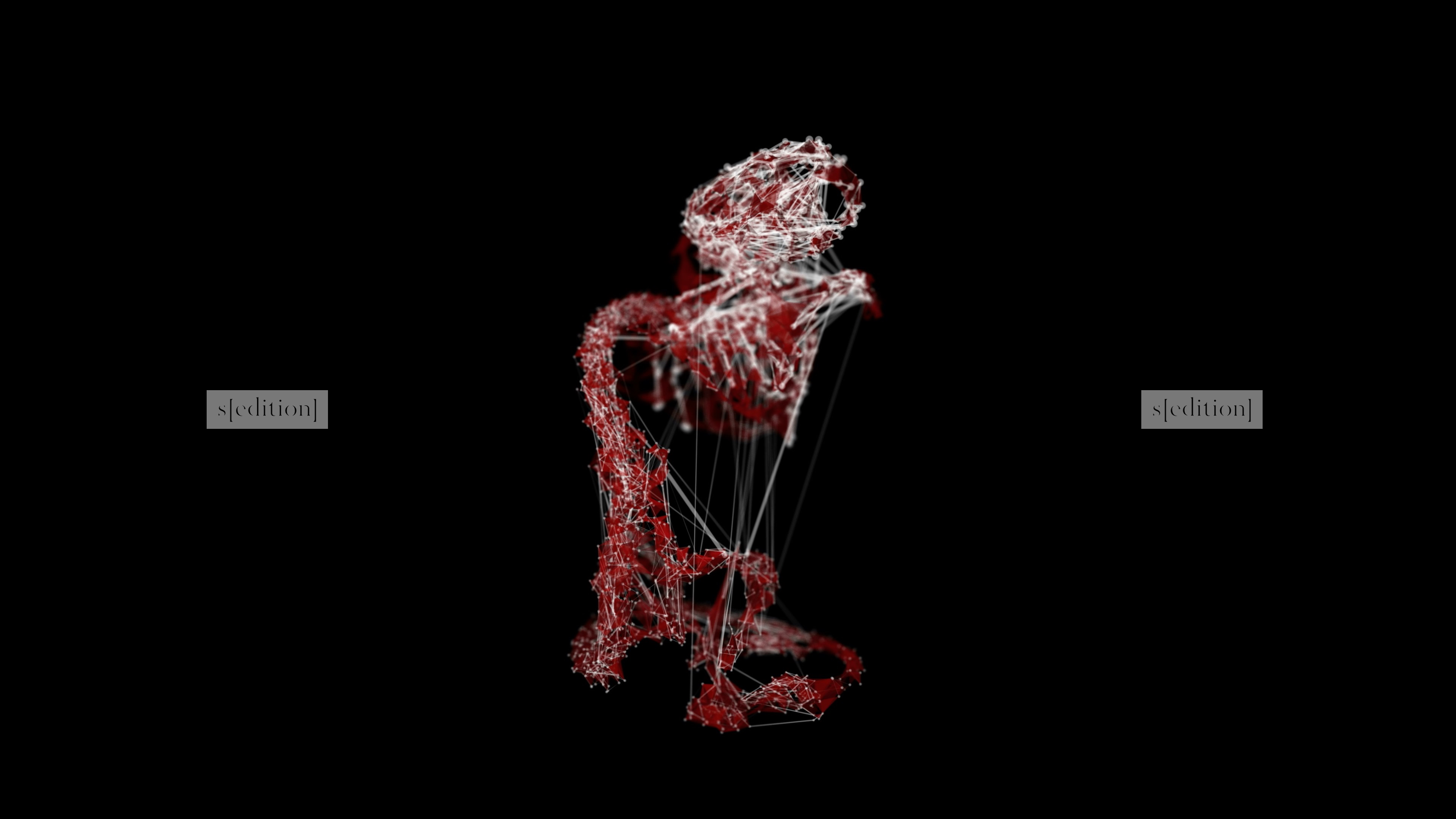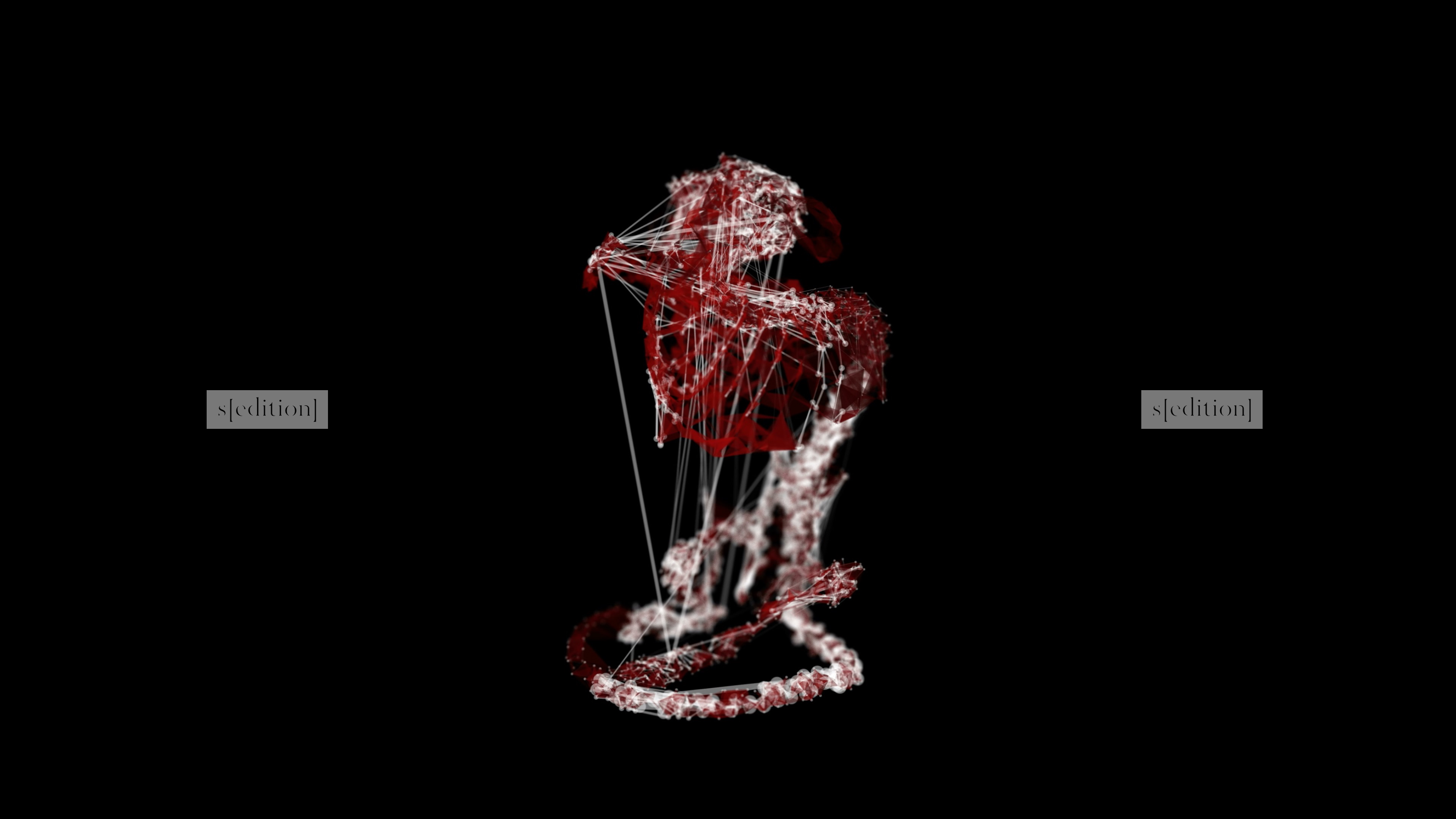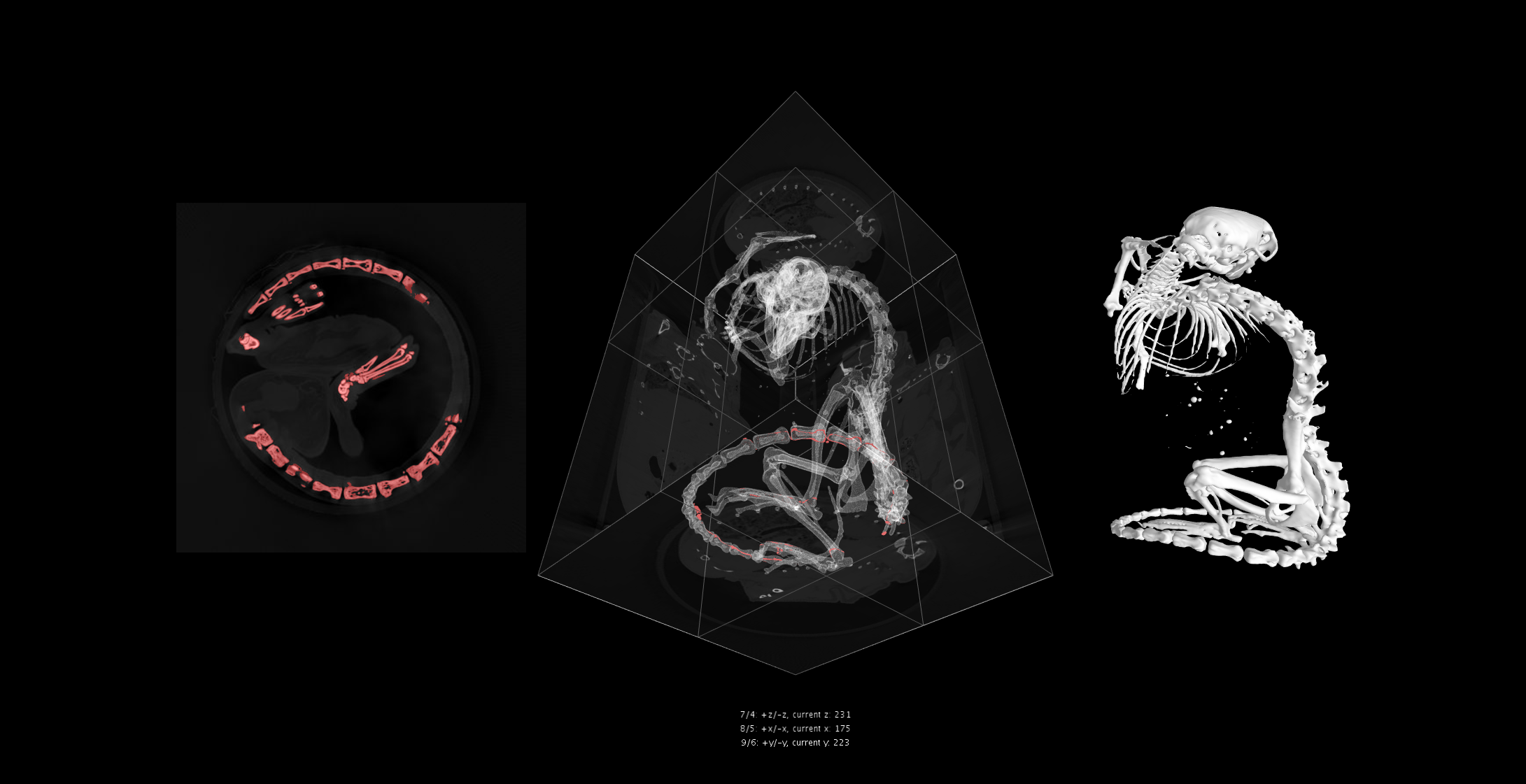NuMi#1 – “Skeletons and Ecorchés”
NuMi.RROR#1 – “Skeletons and Ecorchés”
NuMi.RROR#2 – “Revelation”
NuMi.RROR#3 – “Royal”
Intro
By the end of the nineteenth century, the physician’s skeleton had achieved iconic status. In the nineteenth century critics condemned anatomy as a ‘dark science.’ Only the physician could penetrate, dissect, and stage performances with the dead body. In medical discourse, the transaction between the physician and cadaver was identified with a metahistorical battle between life and death, health and disease, reason and unreason, light and darkness.
Artwork
De Wilde explores the ways artists have critiqued scientists’ representation of the inanimate (human) form from the Renaissance until the present, represent the dynamic qualities of (human) life through the combination of artistic and modern biomedical imaging techniques. De Wilde reconstructs and interprets medical data in custom build 3d visualisation software, whilst appreciating the experimental possibilities made available through medical skills, materials and techniques. In NuMi – “Skeletons and Ecorchés” experimentation is integral to representing both the body and the forces that animate it. Its metaphoric transformations represent aesthetic and poetic complexifications of biomedical research and data. The artwork becomes a catalyst for biomedical (un)seeing and (un)knowing.
How
CT scans from mice are translated in custom build software into a 3d model generated by a SNAP marching cube algorithm. There are 600 radiographic images taken with a 360 ° rotation. Per radiographic image a X-ray flux read during 500ms was recorded. A voltage of 50 kV and a current of 630 μA was used. The voxel size was 15.5 micrometers. The complete dataset consisted of 5 individual scans, each lasting 5 minutes. The total scan time took 25 minutes and 4704 pictures were generated.
Credits
Scans provided by Prometheus, Division for Skeletal Tissue Engineering, KU Leuven Skeletal Biology and Engineering Research Center.
Special thanks to professor Liesbet Geris, Dr. Ing. Greet Kerkhofs and Frederik Vanhoutte.



